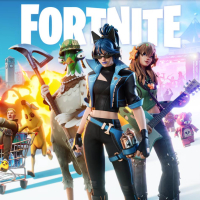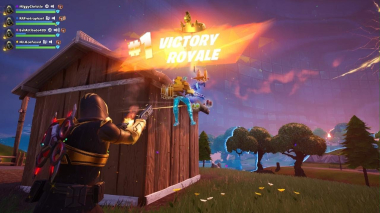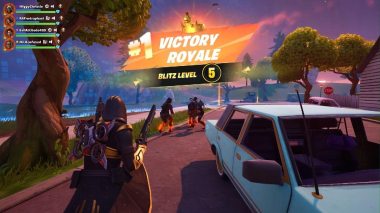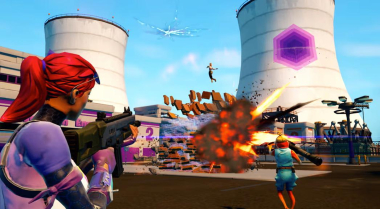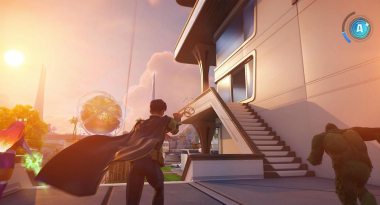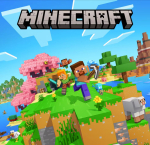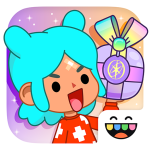A Genre-Bending Powerhouse
When Fortnite first exploded onto the scene in 2017, it was seen as just another battle royale competitor. Fast forward several years, and it has evolved into something much bigger—part social hub, part sandbox, part competitive shooter. With millions logging in across the globe, Fortnite continues to push the boundaries of what a multiplayer game can be. From its free-to-play model to the near-endless variety of events and creative tools, Fortnite has carved out a space not only as a game but as a digital platform.
What makes Fortnite more than just another shooter isn’t just its visual identity or the fact that you can squad up with friends to chase a Victory Royale. It’s the constant reinvention, the collaborations with global franchises, and its fusion of accessible gameplay with a skill ceiling high enough to support a thriving esports scene. Whether you’re diving into the latest crossover event, exploring fan-made maps, or experimenting with mods in Creative mode, Fortnite offers more than just survival—it offers expression.
Gameplay That Balances Chaos and Control
At its heart, Fortnite still holds onto its original battle royale roots. You drop onto an island, scavenge for gear, and face off against others in a gradually shrinking zone. But even that basic structure has been reimagined with layers of strategy, creativity, and personalization. While other titles offer gritty realism, Fortnite delivers vibrant unpredictability. The Zero Build mode, which removes the game's trademark building mechanic, is a great option for players looking to focus on pure combat rather than structural finesse.
Combat itself feels fluid and responsive, whether you’re blasting enemies in close quarters with a shotgun or sniping from a distance. Epic Games has consistently refined the gun mechanics and loot pool, introducing new weapons and vaulting others to keep matches fresh. Add to that vehicles, traversal mechanics, and special powers from seasonal events, and every match feels like a unique blend of skill and chaos.
Creative Mode and Mods: Your World, Your Rules
One of Fortnite’s most transformative features is Creative mode, which opens the door to an entirely different gameplay experience. Here, players can build their own maps, create complex game rules, and experiment with mods that redefine what the game even is. From obstacle courses to full-on RPG-style adventures, the content being produced by the community is nothing short of astonishing.
This mode isn't just a novelty—it’s a robust design toolkit. Players have recreated classic maps from other games, built mini-games that rival standalone titles, and used mods to explore new ways of playing. And thanks to the support from Epic’s Creator Economy, top creators are being rewarded for their contributions, helping to drive a thriving ecosystem of fan-generated content.
Fortnite as a Social Space
Beyond gameplay, Fortnite functions as a social hub. Virtual concerts, movie screenings, and in-game events have drawn millions of players simultaneously. It’s not uncommon to log in just to hang out with friends, explore user-made content, or participate in a limited-time event that has nothing to do with winning or losing. With cross-play and cross-progression supported across almost all major platforms, it’s never been easier to play with friends regardless of hardware.
Epic has positioned Fortnite as a cultural melting pot. One week you're rocking a Spider-Man skin while wielding a lightsaber; the next, you're participating in an anime-themed event with a full set of My Hero Academia emotes. These collaborations keep Fortnite in the headlines and bring in waves of new players eager to experience the latest trends, making the game feel constantly in motion.
Performance Across Platforms
Fortnite runs on just about everything: PC, Xbox, PlayStation, Nintendo Switch, Android, and even cloud-based platforms. iOS users can still play through services like NVIDIA GeForce NOW or Xbox Cloud Gaming, making the game unblocked and accessible on devices where it's not natively supported. Performance is remarkably stable across systems, with Epic scaling graphics and resolution based on your hardware while keeping the core experience intact.
For PC players, the ability to customize graphic settings allows for fine-tuned performance. Console players benefit from consistent optimization, with higher frame rates on next-gen devices like the PS5 and Xbox Series X. Mobile versions have been tailored to touch inputs, and while not as responsive as traditional controls, they provide a solid portable experience.
Seasonal Content and Events: Always Something New
Few games deliver the kind of content cadence that Fortnite does. Each season introduces new themes, characters, weapons, and mechanics. Live events can change the game world in real time, leading to map-wide shifts that reset the meta and offer fresh strategies. These large-scale updates keep the game alive and make every season feel like a new chapter.
Battle Passes provide structured progression, with cosmetic unlocks that span across skins, back bling, emotes, and more. While Fortnite is free to download and play, these passes and item shop cosmetics are how the game monetizes. The good news? None of it is pay-to-win. Cosmetic purchases don’t give players any gameplay advantage.
Community and Competitive Play
Fortnite’s community is massive, and it reflects in everything from creative maps to online discourse. Whether you're a casual player logging in a few times a week or a competitive grinder climbing the Arena ladder, there’s space for you. Epic continues to support the esports scene with seasonal tournaments, in-game cash cups, and partnerships with content creators to spotlight top talent.
Regular updates and transparent communication through blogs and patch notes make players feel connected to the development cycle. Feedback loops are strong here—players voice their opinions, and Epic often listens. It’s a live service model that, when done right, becomes the gold standard.
How to download Fortnite
Fortnite is available to download for free from the Epic Games Store, console marketplaces like PlayStation Store, Xbox Store, and Nintendo eShop, as well as on Android through Epic’s website or Samsung Galaxy Store. The game is not currently available on the iOS App Store, but can be accessed via cloud services.
It runs on Windows, macOS (limited version), Xbox One, Series X|S, PlayStation 4 and 5, Nintendo Switch, and Android. Mac and iOS users can play using cloud platforms such as NVIDIA GeForce NOW or Xbox Cloud Gaming, which also makes the game unblocked on many school or work networks depending on firewalls.
To install Fortnite, users need to create or log in to an Epic Games account, download the launcher (on PC), or locate the game in the respective platform's store. Click download, install the game, and launch once completed.
The minimum PC specs include Windows 10 64-bit, Core i3-3225 or equivalent, 8GB RAM, and Intel HD 4000. Mobile versions are optimized for mid-to-high-end devices. Cloud play is an option for lower-end machines.
Cheats are strictly prohibited and enforced with bans. Mods are available in Creative mode, allowing player-generated content without affecting core matchmaking. Competitive and standard modes remain mod-free.
Fortnite can be played unblocked using cloud services in environments like schools or workplaces, assuming the network allows access to these platforms. It’s an accessible, ever-evolving experience designed to meet players wherever they are.
